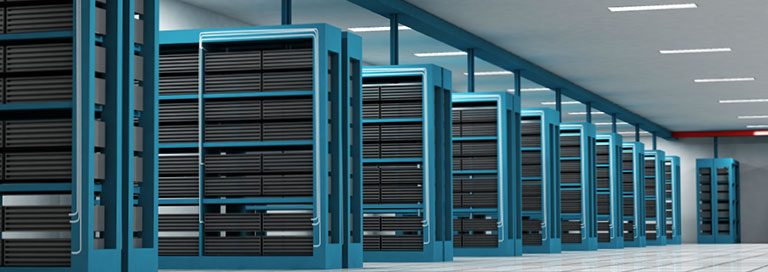Cloud adoption is relatively straightforward. It generally refers to the implementation of Software-as-a-Service (SaaS) solutions such as Microsoft 365 or Salesforce.
Cloud migration is considerably more difficult. It refers to the process of moving an existing on-premises application to a cloud platform. That isn’t always easy or even possible, particularly with older, complex applications that are closely tied to legacy hardware. The application might require extensive modifications or even have to be rebuilt to run on the cloud provider’s platform.
Fortunately, there are alternatives to maintaining the application and its associated hardware on premises. Colocation and bare-metal server solutions are tailor-made for this situation. Let’s explore the features and benefits of these solutions and the best use cases for each.
Colocation: Your Hardware in Rented Data Center Space
With colocation, you are essentially putting IT equipment you own in the provider’s data center. You “rent” the amount of space you need, be it a cabinet (or fraction thereof) all the way up to the entire facility. You reduce or eliminate the need to maintain an onsite data center, while avoiding the headaches associated with re-architecting your legacy applications. Colocation also enables you to maximize your investments in existing hardware.
There are other benefits as well. Colocation data centers are designed with redundant power, cooling and network access to minimize downtime. They also feature strong physical security and 24x7 access to technical support. Because multiple customers share these features, colocation can significantly reduce capital and operational expenses compared to maintaining an onsite data center.
Colocation requires you to manage your own hardware, but it offers higher performance and greater control than public cloud solutions. It also helps ensure compliance with government and industry regulations and enables you to expand into new markets by leveraging data centers in various locations.
Bare-Metal Servers: A Dedicated Server without Virtualization
A bare-metal server is a physical server dedicated to one customer, providing direct access to its hardware resources. You control the entire server, including CPU, RAM, storage and network, without sharing these resources with other customers. Additionally, bare-metal servers aren’t virtualized — because there’s no virtualization overhead, bare-metal servers offer optimal performance and minimum latency for resource-intensive applications.
With a bare-metal server, you have complete control over the server’s configuration, including the operating system, applications and security settings, allowing you to tailor the server to your exact needs. The dedicated nature of bare-metal servers contributes to more stable and predictable performance, and offers increased security and isolation compared to multitenant virtualized environments. The lack of a hypervisor can further enhance security by reducing the attack surface, and you can implement security controls that meet your specific requirements.
You can also size the server’s resources to match your needs, optimizing cost and performance. Some bare-metal server providers offer on-demand scalability, allowing you to quickly add or remove resources as needed.
How to Choose the Right Solution
Colocation is a good choice for organizations that need to maintain legacy hardware to support applications and workloads that can’t be moved to the cloud. It’s also ideal for organizations that want to maintain control over the hardware and infrastructure but don’t want to manage their own onsite data center. Colocation facilities also offer higher levels of reliability and security than many private data centers.
Bare-metal servers are a good choice for organizations with demanding workloads that require dedicated resources. Organizations maintain complete control over their infrastructure and also avoid the “noisy neighbor” issues that often come with a multitenant environment.
Some organizations choose a hybrid approach, using colocation for some aspects of their infrastructure and bare-metal servers for others. For example, a company might move its existing hardware into a colocation facility and then deploy bare metal servers for specialized workloads. Bare-metal-servers-as-a-service can also be deployed within a colocation facility, offering a balance of cloud-like deployment and management with the control and performance of colocation.
How Verteks Can Help
Verteks is here to help you determine if colocation and bare-metal server solutions are right for your applications and workloads. Give us a call to schedule a no-obligation consultation.




